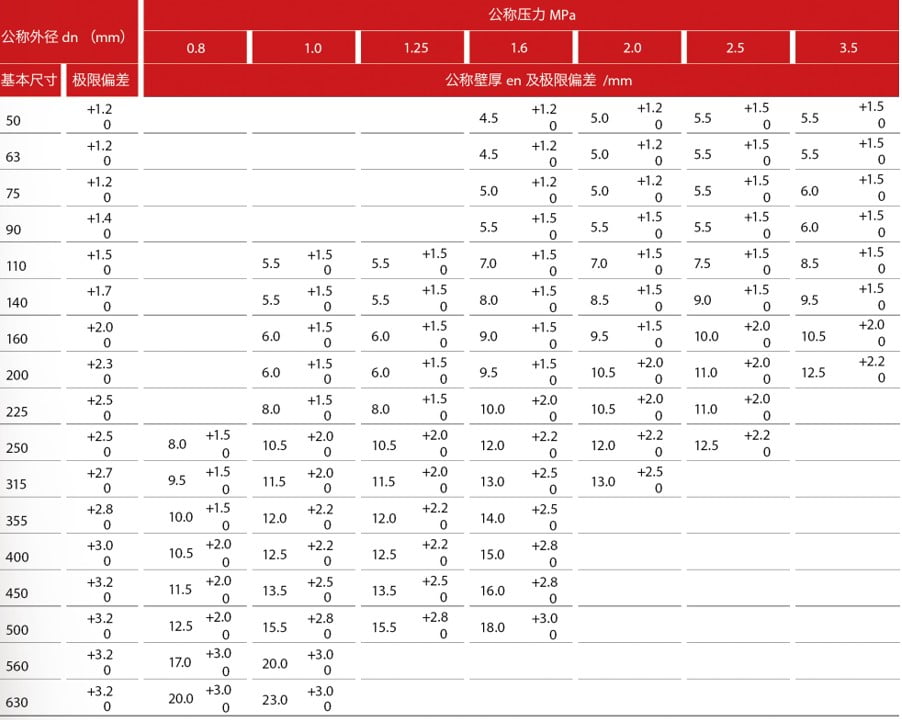In the realm of modern industrial applications, the need for advanced piping materials that offer both reliability and efficiency continues to rise. One such innovation that has gained significant traction is the Steel Wire Mesh Reinforced Polyethylene Pipe, commonly known as SRTP pipe. This article provides a comprehensive overview of SRTP pipes, examining their composition, advantages, applications, and installation considerations.

What is SRTP Pipe?
SRTP pipes are a sophisticated piping solution that combines the flexibility and corrosion resistance of polyethylene (PE) with the strength and rigidity provided by an internal steel wire mesh. This unique structure results in pipes that effectively manage high pressure and temperature, all while maintaining a lightweight profile that simplifies handling and installation.
Composition and Structure
The primary components of SRTP pipes consist of three layers:
- Outer Layer: The outermost layer is made of high-density polyethylene (HDPE), providing excellent resistance to environmental stressors, chemicals, and UV exposure. This layer ensures durability and longevity in various applications, including water supply and drainage systems.
- Reinforcement Layer: The core of the SRTP pipe is where the steel wire mesh reinforcement comes into play. This mesh is strategically embedded within the polymer matrix, enhancing the pipe’s tensile strength and ability to withstand internal pressures without deformation. The wire mesh is typically helically wound, allowing for better distribution of stress throughout the pipe.
- Inner Layer: The innermost layer, also composed of high-density polyethylene, delivers smooth flow characteristics. The low friction coefficient of this layer helps minimize pressure losses in fluid transport, making SRTP pipes particularly effective for water and gas transmission.
Advantages of SRTP Pipe
The integration of steel wire mesh into the polyethylene structure provides several advantages that distinguish SRTP pipes from traditional materials such as PVC or standard PE pipes.
1. Enhanced Strength and Durability
The most notable advantage of SRTP pipes is their exceptional strength. The steel wire mesh reinforcement enables these pipes to withstand much higher internal pressures compared to conventional HDPE pipes. This capability makes SRTP pipes suitable for high-pressure applications, reducing the risk of failure due to burst or sagging, especially in fluctuating temperature environments.
2. Lightweight and Easy to Handle
Despite their strength, SRTP pipes remain lightweight and flexible. This characteristic not only facilitates transport and installation but also reduces the labor costs associated with handling heavier materials. The ease of manipulation during installation translates into faster project completion times, enhancing overall efficiency.
3. Corrosion and Chemical Resistance
The outer layer of polyethylene provides robust resistance to a wide array of corrosive substances found in industrial settings. Unlike metallic pipes that may succumb to corrosion over time, SRTP pipes maintain their integrity even in challenging environments. This feature significantly extends the lifespan of the piping system and reduces maintenance costs.
4. Cost-Effectiveness
Considering their long service life, low maintenance needs, and reduced installation time, SRTP pipes present a cost-effective solution for fluid and gas transport. While the initial investment may be slightly higher than traditional piping solutions, the long-term savings in maintenance and replacement costs should not be overlooked.
5. Environmental Considerations
SRTP pipes are also an environmentally friendly option, as the materials used are recyclable, aligning with global sustainability initiatives. Furthermore, the efficient flow characteristics reduce energy consumption when transporting fluids, contributing to lower overall carbon footprints.

Applications of SRTP Pipe
SRTP pipes have found applications across various sectors, a testament to their versatility and reliability. Some of the primary uses include:
- Water Supply Systems: SRTP pipes are extensively used in municipal water supply systems due to their ability to handle high water pressure while minimizing leaks.
- Gas Distribution: The pipes are also suitable for transporting gases, including natural gas, given their chemical resistance and safety features.
- Irrigation Systems: Agricultural applications benefit from SRTP pipes due to their durability in diverse environmental conditions and flow efficiency.
- Industrial Applications: Various industries utilize SRTP pipes for transporting chemicals, slurries, and other specialized fluids, capitalizing on their resistance to corrosion and mechanical stress.
- Infrastructure Projects: Large-scale construction projects often integrate SRTP pipes for both above-ground and underground installations, where durability and reliability are paramount.
Installation Considerations
Proper installation of SRTP pipes is critical to ensuring optimal performance and longevity. Here are some important considerations for installing SRTP piping systems:
1. Site Preparation
Before installation, it is crucial to conduct site assessments to identify any potential obstacles, soil types, and environmental conditions. Proper groundwork can prevent complications during and after installation.
2. Jointing Techniques
SRTP pipes typically feature several jointing methods, including butt fusion and electrofusion. Selecting the appropriate technique based on the application and environmental factors is essential for maintaining joint integrity and preventing leaks.
3. Compliance with Standards
It is vital to comply with local building codes and industry standards during installation. Familiarizing oneself with regulations regarding trenching, bedding materials, and burial depths will ensure the installation meets safety and performance benchmarks.
4. Periodic Inspection
Post-installation, it is advisable to perform regular inspections to ensure the integrity of the piping system. Monitoring for signs of wear, leakage, or environmental damage is essential for maintaining long-term reliability.
Conclusion
The emergence of Steel Wire Mesh Reinforced Polyethylene Pipe has significantly transformed the landscape of piping materials, offering a unique combination of strength, flexibility, and resistance to environmental factors. SRTP pipes are designed not only to meet the rigorous demands of modern industry but also to promote efficiency and sustainability.
As infrastructure projects grow in complexity and the demand for reliable materials increases, the adoption of SRTP pipes will undoubtedly continue to rise, underscoring their pivotal role in the development of resilient and efficient piping systems across multiple applications. By understanding their benefits and proper installation techniques, engineers, and project managers can ensure the successful utilization of SRTP in their projects, paving the way for a more robust and sustainable future in construction and industrial operations. dcpipe-piping system expert

